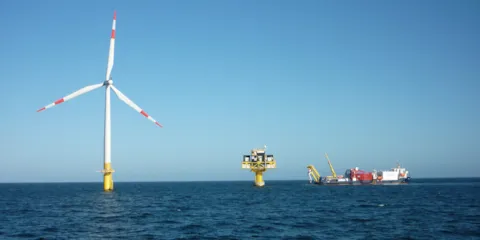Fill out the form below to watch the on-demand video recording
The energy sector undoubtedly plays a crucial role in accomplishing the 1.5 C° climate change threshold target, and offshore wind energy is expected to be a major contributor to the energy transition. However, the offshore wind industry faces a major question: is the current one-interconnection-per-project approach sufficient to fully enable offshore wind deployment? And if not, what is needed to ensure that 30 GW of offshore wind can be absorbed into the nation’s power grid by 2030 (and beyond), within the constraints of technical, economic, and political feasibility? Many regional and global experts see the planned offshore grid as a way forward, but this solution, as do all, presents advantages, challenges, and complexities.
